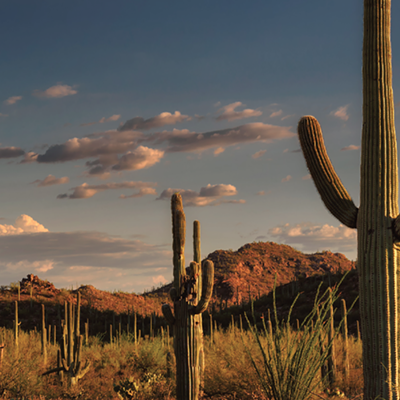Government-sponsored art is a thorny issue to many artists. On the one hand, state-funded institutions and grants offer financial incentives and exhibition opportunities to advance one's career. On the other, a gallery in almost any city or county building is typically a dead zone, with only a trickle of visitors bothering to even glance at the art on their way to pay taxes, renew a license or (at best) enjoy a ballroom-dancing lesson at a "cultural center."
This is because government-sponsored and academic art mostly exists outside of the hot and hairy art market, where careers and reputations are truly forged and written about in magazines like, say, Artforum.
I emphasize this point because it's one that largely escapes consideration by Jennifer McLerran, a Northern Arizona University assistant art history professor and museum curator. In her new book, A New Deal for Native Art: Indian Arts and Federal Policy, 1933-1943, she makes the case that administrators of New Deal Indian policy, particularly John Collier, then-commissioner of Indian Affairs, insisted on romanticizing pre-industrial forms of indigenous art rather than pushing native artists toward self-sufficiency. It's an interesting argument coming from the manager of a state gallery.
To be fair, McLerran doesn't say the feds might have better prepped artists for their big splash into the New York arts scene of the '30s. Rather, simply allowing them to have made their works more accessible to the emerging tourist market of a rapidly growing Automotive Age would have been a better tact. Although they no doubt meant well, Collier and others (particularly arts director Rene d'Harnoncourt and Navajo artist Gerald Nailor) insisted on limiting indigenous arts to "traditional forms and techniques of handcraft production," she says.
The value of McLerran's scholarship appears when she relates the story of how the New Deal came to impact Indian art while simultaneously providing a historical context about how decisions were made. In the opening chapters, she traces the development of the New Deal Indian art policy; rather than villainize Collier, she elaborates on his anti-capitalist and pro-communal views and even shares excerpts from his quite-good poetry. Indeed, the portrait of Collier she paints is compelling: His ideas influenced folks today who insist that modern man is inferior to native peoples, and that only through pre-industrial traditions can we be saved. She writes:
Collier viewed Native American cultures as carrying the potential for redemption of Euro-Americans. Their "newly exfoliating" handcrafts, nourished by the enduring native social body, carry a unique and important value and are thus worthy of perpetuation, not simply for the sake of survival of native cultures but for the survival of human species. Collier's writings make clear his commitment to revival and perpetuation of the traditional native cultures of the Americas. However, we must consider whether his Occidentalist yearnings served the interests of Euro-Americans at the expense of those real individuals who composed the cultures that would—in Collier's grand scheme—someday serve as the salvation of all humankind.
Despite interrogating this likelihood, McLerran lacks the economic figures necessary to truly determine whether or not Collier was correct in emphasizing tradition and (in the case of d'Harnoncourt) high-quality craftsmanship over mass-producing knickknacks for Route 66 motorists. Sure, "to deny the value of commoditized forms of native art as authentic expressions is to deny the native artist recognition as a fully modern subject capable of creative adaptation to change." No doubt many white men got rich exploiting and shoddily producing items Collier wished to keep "pure." (Consider pro and college footballs teams making millions off of plastic tomahawks and other nonsense during games where racist mascots prance.) But without any numbers regarding the pre-World War II tourist economy, it remains difficult to tell who had the right idea, and who did not.
Regardless, McLerran does an excellent job of articulating exactly how certain art forms (Navajo weaving, say) suffered due to New Deal economic development strategies "working at cross-purposes with arts and preservation efforts."
A New Deal for Native Art explains how the government undermined indigenous art at a crucial moment in history, when cars and roads were making remote parts of the country accessible and open for tourist season. How much so, we don't yet know.







